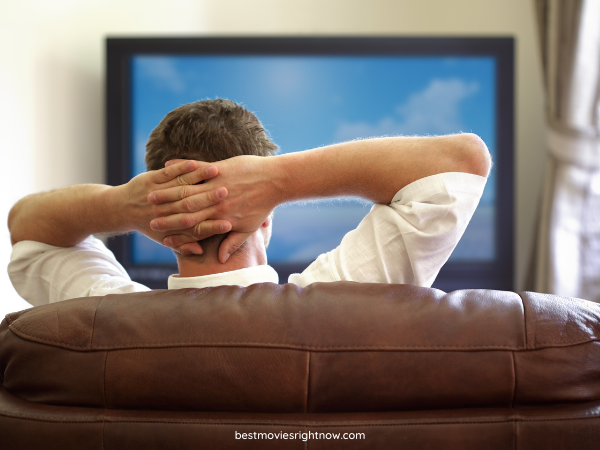Time to binge-watch Oscar nominees! Do right by those movies and think about how you can improve picture and audio quality for the best home TV viewing.

Many factors can affect the quality of your TV viewing experience, especially if you’re watching movies at home. Some newer TVs have built-in features that filmmakers find objectionable because they make movies look like TV soap operas!
When you burrow into the couch with a big bowl of popcorn, make sure you get the most out of your movie time. Here’s how to improve your TV viewing experience.
Light and Color
Your TV probably has presets that are labeled with things like “bright,” “warm,” or “cool” to identify how much backlighting or saturated color the picture displays. It also may have “modes” for sports or movies.
Take the time to explore your TV’s controls—including the advanced options—and try manual adjustments to find the combination of color, brightness, and contrast that you like best.
You’ll likely settle upon a combination that pleases you, and that’s what’s important. If you want to get really precise about it, try looking up a color calibration app or video on Netflix or YouTube.
The light in your TV viewing room has a lot to do with how great the picture is. Try dimming lamps, drawing curtains, or pulling shades down, and see if that makes a difference to the picture. Some suggest putting a light behind your TV for contrast.
If you find that your TV’s picture has gone sparkly or it goes on and off, check your HDMI cable connection. Correcting issues with your cabling is one of the easiest ways to improve your TV viewing experience.
Also, check the “aspect ratio,” especially if you’re watching vintage TV or movies shot in wide angles. Letterboxing is okay if it makes the film or TV show look better.

Motion Controls
New HDTVs may have so-called “motion control,” “motion interpolation,” or “motion smoothing,” designed to reduce blur when there’s motion. This may be great for sports, but it’s terrible for movies.
Unfortunately, different TV brands have different names for the control for this feature, but if you dig around in the advanced features, you can probably find how to turn it off. AV aficionados may argue that a higher frame rate is more “modern,” but ultimately, it comes down to how the picture looks to you, and if you think the rate makes a difference.
Get a Sound Bar or Bluetooth Adapter
A soundbar can give your TV’s audio an instant quality boost. If you’d rather keep the experience to yourself, invest in a decent pair of Bluetooth headphones (you may need to buy an adapter to plug into your TV to transmit the sound to the headphones).
If you use a streaming device, it may have Bluetooth capability built-in or through an app on your phone.
These tips should help you improve your TV viewing experience, but don’t try them five minutes before your friends arrive for the watch party—take the time to cycle through your options and choose settings and devices that give you the picture and audio you want most from your TV.
Related Posts:
- 4 Steps for Setting Up the Perfect Entertainment Center
- Best Movie Marathons to Break in Your Entertainment Center
- 4 Must Have Home Entertainment Gadgets
- Tips for Troubleshooting Your Home Entertainment System
- 8 Ways to Spruce Up The Décor Of A Home Movie Theater
- Tips for Setting Up the Perfect Movie Theater at Home
- 4 Tips to Turn Your Living Room Into a Movie Theater

- What To Bring to Set as a Production Assistant - April 2, 2024
- Top 5 Iconic Jewelry Moments in Film History - March 22, 2024
- Unique and Classy Ways To Have a Disney-Themed Wedding - March 11, 2024

The Best Movies to Watch in Your Home Theater
Sunday 6th of February 2022
[…] >>>3 Easy Ways to Improve Your TV Viewing Experience […]
What to Look for When Buying a Monitor
Sunday 6th of February 2022
[…] 3 Easy Ways to Improve Your TV Viewing Experience […]
The Future of High-Definition Displays
Saturday 5th of February 2022
[…] 3 Easy Ways to Improve Your TV Viewing Experience […]
Ways the Television Has Evolved Throughout History
Saturday 5th of February 2022
[…] 3 Easy Ways to Improve Your TV Viewing Experience […]
How To Improve Your TV’s Display Settings for Movies
Saturday 29th of January 2022
[…] 3 Easy Ways to Improve Your TV Viewing Experience […]